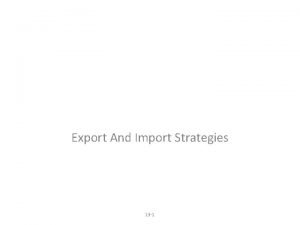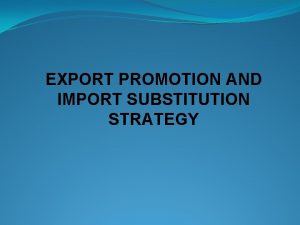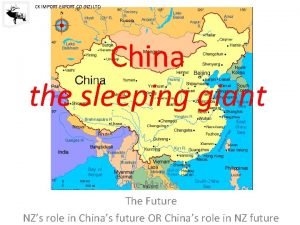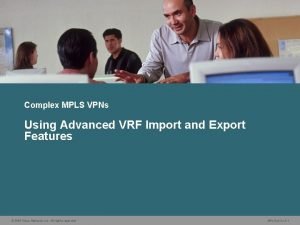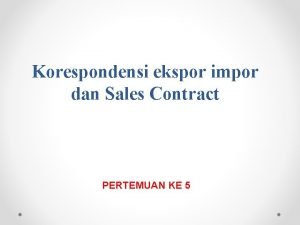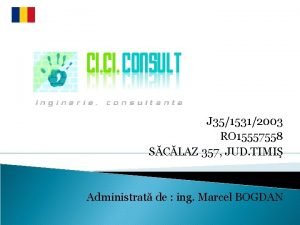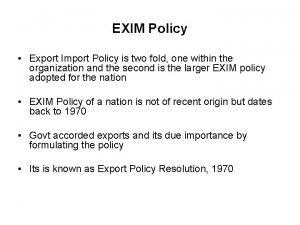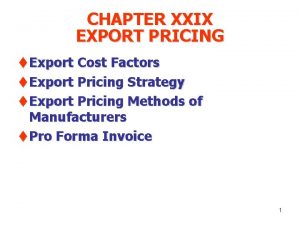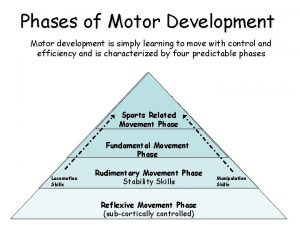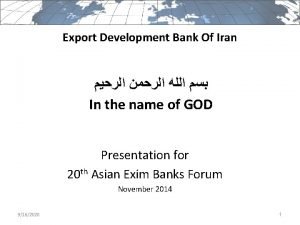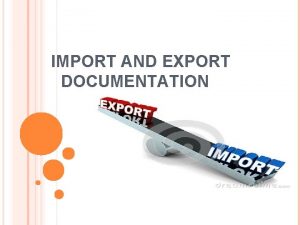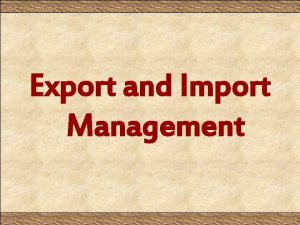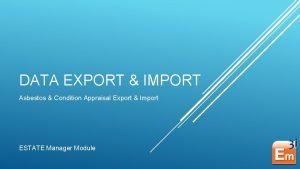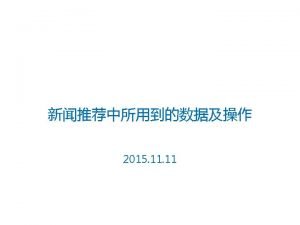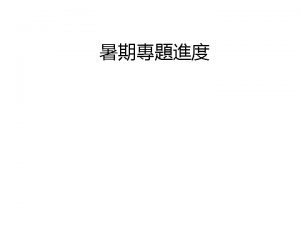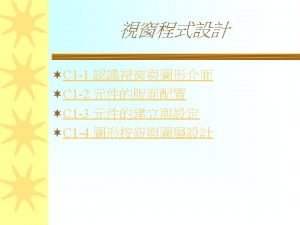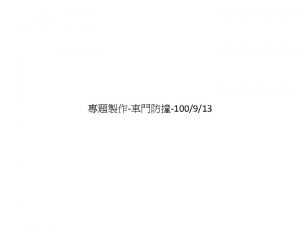Export and import Strategies Phases of Export Development
















- Slides: 16

Export and import Strategies Phases of Export Development Preengagement Phase 1 • Companies selling goods and services solely in the domestic market • Those companies considering but not currently exporting Initial Exporting Phase 2 • Companies that do sporadic, marginal exporting • Companies that see lots of potential in export markets • Companies unable to cope with exporting demands Advanced Phase 3 • Companies become regular exporters • Companies gain extensive overseas experience • Companies may use other strategies for entering markets

Export Entry Mode A firm’s products are manufactured in the domestic market or a third country, and then transferred either directly or indirectly to the host market. • Indirect export • Direct export • Cooperative export

Indirect Export Mode • Using independent organizations located in the producer’s country. • The sale is like a domestic sale. Pros and Cons?

Indirect Export Mode (cont’) Export buying agent (export commission house) -- A representative of foreign buyers who resides in the exporter’s home country. Broker -- What is the characteristic of a broker? Export management company/export house -- Specialist companies set up to act as the ‘export department’ for a range of companies. Trading company -- Mostly in Africa and the Far East. Providing a range of services such as shipping, warehousing, finance, technology transfer, insurance and consulting. Piggyback -- The ‘rider’ company use the ‘carrier’ company’s established export facilities (e. g. , sales subsidiaries) and foreign distribution to export to focal countries. (Pros and cons? )

Direct Export Modes Sells directly to an importer or buyer located in a foreign market area, including export through foreign-based agents and distributors (independent intermediaries). • Distributors -- the exclusive representatives of the company and are generally the sole importers of the company’s product in their markets. -- often take care of the after-sale service -- paid according to the difference b/t the buying and selling prices • Agents -- could be exclusive, semi-exclusive, and non-exclusive in representing export companies -- works on behalf of exporter but do not buy products. -- paid by commission Ex: Eli Lilly

Cooperative Export M odes/Export Marketing Groups Small companies ally to export through a common foreign-based agent. E. g. , Companies A, B, C A-Living room furniture B-Dinning room furniture C-Bedroom furniture The cooperation among the manufacturers can be tight or loose. -- tight: Create a new export association, acting as the exporting arm of all the member companies -- loose: sell their own brands through the same agent. (Photocopy the figure 8. 1 on p. 218, Hollensen book)

Shipping Arrangements in Trade 1. EXW (ex-works) 2. FAS (Free Alongside Ship) 3. FOB (Free on Board Vessel) 4. C&F (Cost and Freight) 5. CIF (Cost, Insurance, Freight) 6. Ex dock 7. DDP (Delivered Duty Paid)

Point of Delivery and Where Risk Shifts From Seller to Buyer Ex: Green Bean US$5, 000/ton FOB New Orleans EXW Supplier’s factory/warehouse Export dock Port of shipment (on board vessel) Import dock Buyer’s warehouse (destination) Main transit risk on FAS FOB C&F CIF Ex dock DDP

Payment Conditions 1. Consignment 2. Open Account 3. Document against Acceptance (D/A) 4. Document against Payment (D/P) 5. Letter of Credit 6. Cash in advance



Foreign Freight Forwarders Freight forwarder—an import or export specialist dealing in the movement of goods from producer to consumer • Largest intermediary in terms of value and weight of products managed • Services more limited than those of EMC • Obtains best routing and means of transportation • Moves products to air or ocean terminal • Secures space on planes or ships and necessary storage prior to shipment • Does not take title to goods or act as sales representative • Charges based on the shipment value Intermodal transportation—movement of goods across different modes from origin to destination • Increasing reliance on airfreight – more frequent and lighter-weight shipments

Import Strategies Importing—bringing of goods and services into a country • Results in the importers paying money to the exporter in the foreign country Two basic types of imports • Industrial and consumer goods and services provided to customers unrelated to exporter • Intermediate goods and services provided to customers that are part of the firm’s global supply chain Why companies import?

Import Strategies (cont. ) Types of importers include those: • Looking for any product around the world to import and sell • Looking foreign sourcing to get their products at the cheapest price • Using foreign sourcing as part of their global supply chain Importing requires expertise in dealing with institutions and documentation • Import broker—intermediary who helps an importer clear customs

Role of Customs Agencies Customs—a country’s import and export procedures and restrictions • Customs agencies—assess and collect duties and ensure import regulations are adhered to – deal with smuggling – assign a tentative value and tariff classification to the merchandise – determine if import restrictions apply Broker or import consultants—help importer minimize import duties by: • Valuing products to qualify to receive more favorable duty treatment • Qualifying for duty refunds through drawback provisions • Deferring duties by using bonded warehouses and foreign trade zones • Marking import’s country of origin

Role of Customs Agencies (cont. ) Documentation—importers must submit to customs documents that determine whether the shipment is released and what duties are assessed • Must file documents to take title of shipment – taking title—receive products without purchasing them Third-Party Intermediaries Companies that facilitate the trade of goods but that are not related to either the exporter or importer • Stimulate sales, obtain orders, and do market research • Investigate credit and collect payments • Handle foreign traffic and shipping • Support company’s sales, distribution, and advertising staffs Some act as agents on behalf of the exporter, and some
 Indirect export
Indirect export Export and import strategies
Export and import strategies Export promotion meaning
Export promotion meaning Ck import
Ck import Vrf export map
Vrf export map Sales contract export
Sales contract export Timi import export
Timi import export Import export policy
Import export policy China international import export 2019
China international import export 2019 Import javax.swing.*
Import javax.swing.* Import java.io.* import java.util.*
Import java.io.* import java.util.* Import numpy as np import matplotlib.pyplot as plt
Import numpy as np import matplotlib.pyplot as plt Import java.awt.event.*
Import java.awt.event.* Export pricing methods
Export pricing methods Reflexive phase of motor development
Reflexive phase of motor development Export development bank of iran
Export development bank of iran Mohammed houssein kamali
Mohammed houssein kamali

